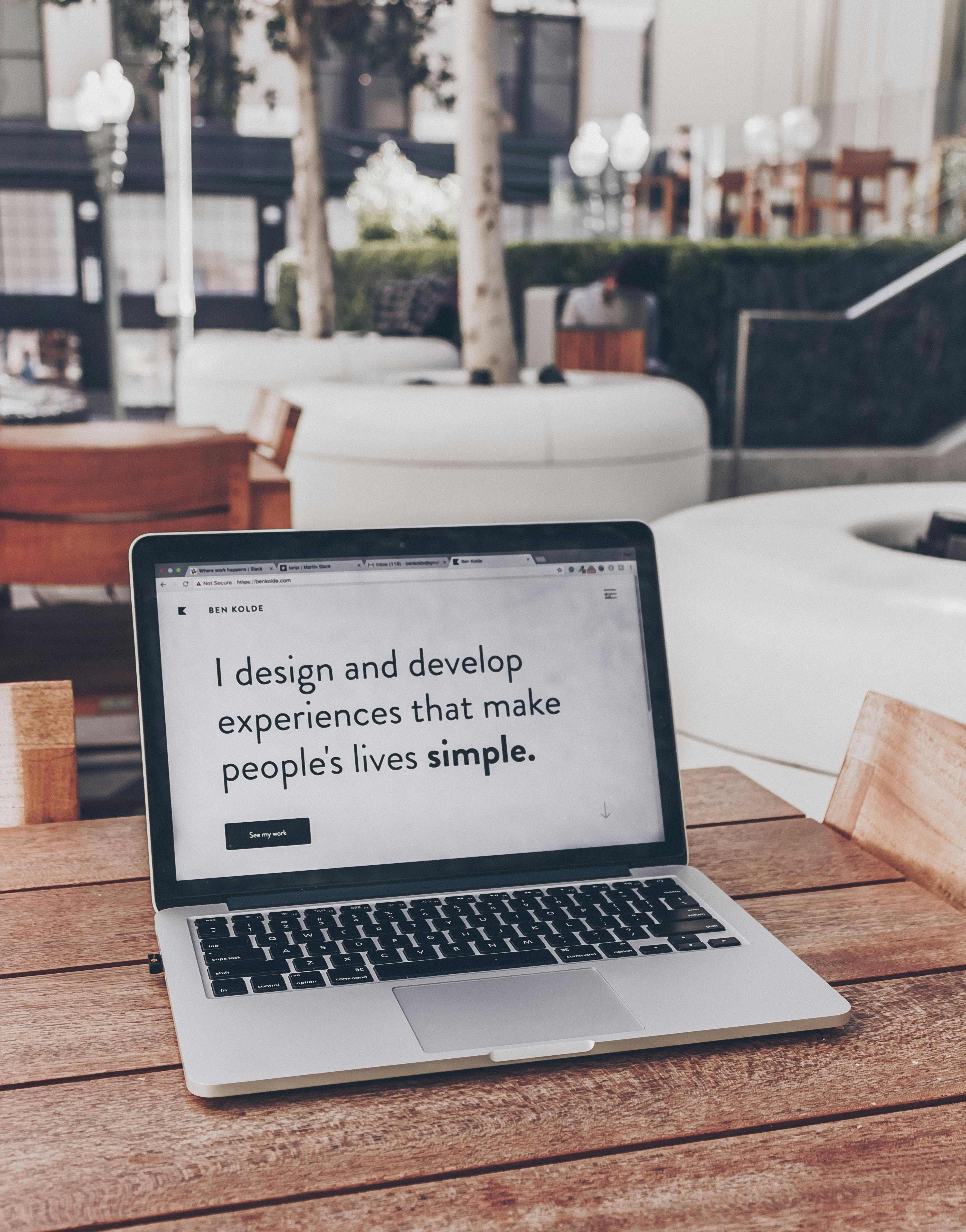
Introduction to UX Portfolios
A User Experience (UX) portfolio serves as a crucial tool for UX designers to effectively showcase their skills, creativity, and understanding of the design process. In a competitive job market, where numerous designers vie for attention, a well-crafted portfolio can function as a distinguishing factor that highlights an individual’s experience and unique approach to design challenges. The importance of a compelling UX portfolio cannot be overstated; it not only reflects a designer’s technical proficiencies but also illustrates their reasoning and problem-solving abilities throughout various projects.
A UX portfolio typically encompasses a collection of case studies that narrate the designer’s journey through specific projects. Each case study should document not only the final results but also the underlying research, methodologies, and design iterations that supported the final output. By presenting their thought process, designers are able to communicate their analytical skills and provide insight into how they tackle design challenges. This holistic approach allows potential clients and employers to assess a designer’s fit for their needs and expectations.
Moreover, a UX portfolio should demonstrate versatility across different projects, showcasing a range of skills, from user research and wireframing to visual design and usability testing. This diversity illustrates adaptability and a comprehensive understanding of the UX design field, opening opportunities across various industries. By effectively leveraging their portfolios, designers can not only attract clients but also convey their professional identity, values, and design philosophy. As the demand for skilled UX professionals continues to rise, the significance of maintaining a thoughtful and engaging portfolio has never been more paramount.
Understanding the Essentials of a UX Portfolio
A UX portfolio is a quintessential tool for any user experience designer, serving not only as a showcase of work but also as a reflection of one’s design philosophy and approach. To create an effective UX portfolio, several fundamental components must be included to give potential employers or clients a comprehensive understanding of your skills and experiences.
First and foremost, the selection of work displayed in the portfolio should be curated with care. It is advisable to include a diverse range of projects that demonstrate your versatility in various industries and project types. Each project in your portfolio should not merely represent a completed task but should encapsulate the entire design journey—from ideation and research to prototyping and user testing. This selection serves as a testament to your capability to handle different UX challenges.
Next, integrating detailed case studies is crucial. A well-crafted case study narrates the problem-solving journey, outlining the challenges faced, the research methods utilized, and the design solutions implemented. This element allows the viewer to understand not only the final outcome but also the thought process behind each design decision, which is a vital component of effective UX design. Highlighting key metrics or user feedback can further substantiate the effectiveness of your designs.
Additionally, your design process should be clearly articulated. Showcasing your methodology provides insight into how you approach user experience challenges, emphasizing the importance of user-centered design in your work. Lastly, including a personal statement or philosophy at the outset sets a tone for your portfolio, expressing your passion for UX design and your commitment to creating meaningful user experiences. This combination of curated work, insightful case studies, and a defined design process makes for a compelling UX portfolio that resonates with stakeholders.
Selecting Your Best Work
When curating a UX portfolio, the selection of projects is crucial to effectively showcase your skills and professional journey. A well-designed portfolio not only highlights your abilities but also reflects your evolution as a designer. To create a compelling collection, begin by assessing the diversity of your projects. Include a range of work that spans various industries, platforms, and design challenges. This breadth demonstrates your adaptability and underscores your ability to cater to different user needs.
Another factor to consider is the complexity of each project. Aim to feature work that presents unique challenges and illustrates your problem-solving skills. Projects that required innovative thinking or encountered potential user experience pitfalls can reveal your capability to navigate obstacles and deliver user-centered solutions. Ensure that these complex projects showcase not just your successes, but also your learning processes and reflections, enhancing the narrative of your professional development.
Additionally, reflect on your specific role within each project. Include pieces where you played a significant part, whether it involved research, wireframing, prototyping, or user testing. This clarity helps potential employers or clients understand your unique contributions and strengths. For collaborative projects, clarify your responsibilities to give insight into how you collaborate with others and lead initiatives.
The selection process should also involve a critical evaluation of each project’s impact. Share outcomes that resulted from your designs, such as improved usability metrics, increased user satisfaction, or business success stories. By strategically curating your best work based on diversity, complexity, and personal contribution, you will present a portfolio that not only reflects your experience but also resonates with prospective employers looking for a well-rounded UX designer.
Creating Interactive Case Studies
Crafting engaging and interactive case studies is a crucial component in showcasing your UX design skills. A well-executed case study not only highlights your design process but also narrates a compelling story around it. To begin, clearly outline the problem you are addressing. Present the challenge in a way that is relatable and relevant to your target audience, ensuring they understand the context of your work.
Next, delve into your design process. Document each stage meticulously—from research and ideation to prototyping and user testing. This is where you can illustrate your methodological approach, showcasing your ability to respond to user needs and preferences. Elaborate on the methodologies you employed, such as usability testing, surveys, or interviews, to gather valuable user insights. Including data-driven results can substantiate your choices, providing credibility to your process.
It is essential to present the final solution as a natural outcome of your research and design efforts. Don’t merely showcase the end product; instead, illustrate how your design addresses the initial problem and enhances the user experience. Utilize visuals such as screenshots, prototypes, and user flows to enrich your narrative. These elements not only add interest but also facilitate a better understanding of the design decisions made throughout the project.
Furthermore, ensuring that your case studies are interactive can significantly elevate engagement. Consider using interactive prototypes or animations that allow viewers to experience the flow of your design. This immersive approach can leave a lasting impression, demonstrating not just your design skills, but your understanding of user experience principles. Overall, a well-structured and visually appealing case study can effectively convey the story of your project and the impact of your design work.
Highlighting Your Design Philosophy
In the highly competitive field of user experience (UX) design, articulating your design philosophy is crucial for standing out from the crowd. Your design philosophy serves as a declaration of your values, methodologies, and overall approach to UX design, providing potential clients and employers insight into what drives your creative process. By clearly expressing your design philosophy, you can establish a deeper connection with your audience and communicate the unique perspective you bring to your work.
The first step in highlighting your design philosophy is to reflect on the core beliefs that shape your approach to design. Consider what aspects of user experience are most important to you—whether it is empathy, accessibility, or innovation. These key elements can serve as pillars upon which you build your philosophy. For instance, if you prioritize empathy, you may emphasize user-centered design principles that ensure every decision you make is informed by an understanding of users’ needs and frustrations.
Once you have identified your core values, incorporate them into your portfolio through various means. Written content, such as introductory statements or case study descriptions, can effectively communicate your design beliefs. Similarly, visual elements, such as project selections, can illustrate your philosophy in practice. Consider showcasing projects that exemplify your values across different stages of the design process, from user research to final implementation. This demonstration not only reinforces your philosophy but also allows your audience to see how it translates into tangible outcomes.
Finally, don’t hesitate to update your design philosophy as your career evolves. As you encounter new challenges and experiences, your viewpoint may shift, and it’s important for your portfolio to reflect these changes. A dynamic, thoughtful articulation of your design philosophy will resonate more with potential clients and employers, prompting them to recognize the depth and intent behind your work.
Designing for User Engagement
Crafting a compelling UX portfolio goes beyond merely showcasing previous projects; it is essential to integrate design elements that enhance usability and user engagement. A well-structured layout acts as the backbone of your portfolio, effectively guiding users through your work. Utilize a grid-based design that promotes clarity, allowing prospective clients or employers to easily navigate through various sections. Ensuring responsive design is crucial since an increasing number of users will access portfolios via mobile devices. This adaptability guarantees a seamless experience across all platforms.
Color schemes play a pivotal role in shaping user perception and engagement. Select a palette that resonates with your personal brand while maintaining readability. Muted tones often evoke sophistication, while vibrant colors can create an energetic appeal. However, be cautious to balance aesthetics with usability, ensuring high contrast for text elements to facilitate easy reading. Furthermore, using colors strategically can help in differentiating various sections, allowing visitors to find information effortlessly.
Typography also significantly influences user experience in your portfolio. Aim for a cohesive font pairing—one for headings and another for body text—ensuring that they complement each other. Choose sans-serif fonts for their modern appeal and readability on digital screens. Maintain consistency with spacing, line height, and font size to create a polished presentation. This attention to detail makes the content more inviting and accessible, ultimately enhancing the user experience.
Lastly, incorporating interactive elements can provide an engaging experience for users. Simple animations, hover effects, or transitions can make the exploration of your portfolio more enjoyable. However, it is essential to keep these features subtle and not overwhelming, as they should complement rather than distract from your work. A thoughtfully designed UX portfolio, characterized by effective visual design and attention to user engagement, lays the groundwork for making a lasting impression on viewers.
Including Testimonials and Client Feedback
In the realm of user experience (UX) design, building credibility through testimonials and client feedback is essential for an impactful portfolio. Potential clients or employers are often keen to assess the effectiveness of a designer’s work, and concrete evidence of satisfied clients can significantly enhance the appeal of a portfolio. Integrating authentic testimonials allows designers to present a compelling narrative about their ability to deliver results and meet user needs.
One effective strategy for soliciting testimonials is to ask clients for feedback shortly after project completion. At this stage, clients are likely to be more engaged with the results and appreciative of the work done. When requesting feedback, it is beneficial to provide guiding questions that can help clients articulate their thoughts on your collaboration, the design process, and the outcomes achieved. This can lead to more detailed and context-rich testimonials, which are often more persuasive than generic praise.
When showcasing testimonials in a UX portfolio, presentation is key. Organizing feedback within relevant project sections can help illustrate specific aspects of your work, such as problem-solving, creativity, and collaboration. Use visually striking formats to highlight key phrases or impressive statistics from client responses. This not only draws attention but also makes the information more digestible for viewers. Additionally, consider including the client’s name, title, and company – with their permission – to bolster the authenticity of the testimonial.
Furthermore, a short case study can accompany testimonials, providing context about the project and the challenges faced. This allows potential clients or employers to see how your skills resulted in positive outcomes. The integration of testimonials and client feedback in your portfolio, when done thoughtfully, can effectively build trust and demonstrate your impact as a UX designer, ultimately enhancing your professional credibility.
Publishing and Promoting Your Portfolio
Publishing and promoting a UX portfolio effectively is pivotal for designers aiming to showcase their skills and attract potential clients or employers. There are several platforms available where designers can create a professional presence, including industry-specific sites such as Behance and Dribbble, as well as personal websites. These platforms not only allow designers to display their work but also facilitate networking opportunities within the UX community.
When choosing a platform, it is essential to consider the audience and type of work being showcased. Behance is particularly advantageous for creative professionals due to its visually engaging layout, while Dribbble is favored for designers looking to highlight specific projects and receive feedback. Additionally, establishing a personal website offers greater control over presentation and allows for a customized branding experience. By combining these approaches, a comprehensive online presence can be developed.
Once the portfolio is polished and published, the next step involves promoting it. Social media platforms such as LinkedIn, Twitter, and Instagram serve as effective channels for sharing work and engaging with a broader audience. Regularly posting updates, insights, and design process narratives can attract attention and showcase expertise. It is also beneficial to engage with professional communities and groups, as these connections can lead to valuable opportunities and collaborations.
Networking is another crucial component of promotion. Actively participating in design conferences, workshops, and local meetups can foster relationships with other professionals in the field. These interactions often lead to referrals or new opportunities. Moreover, sharing the portfolio with mentors or peers for feedback can enhance visibility and credibility, aiding in the growth of a designer’s professional reputation.
Updating Your Portfolio Regularly
Maintaining a relevant and compelling UX portfolio is a critical aspect of showcasing your best work as a designer. As the field of user experience evolves, so too should your portfolio to reflect your most current skills, projects, and methodologies. Regular updates not only keep your work fresh and engaging but also demonstrate your growth and adaptability as a professional.
To establish a consistent schedule for reviewing and updating your portfolio, consider setting monthly or quarterly reminders. This will ensure that you carve out dedicated time to assess your work and make necessary adjustments. During these reviews, take into account recent projects that highlight innovative approaches and methodologies you may have learned. Be prepared to replace older projects that no longer represent your current capabilities or design philosophy.
Additionally, it is essential to evaluate the layout and presentation of your portfolio. Design trends change rapidly, and a portfolio that is visually outdated may not resonate with potential employers or clients. Ensure that your portfolio aligns with contemporary design standards while also embodying your unique style. Updating the visual elements, such as typography, color palette, and imagery, can significantly enhance its appeal.
Moreover, consider seeking feedback from peers or mentors during your portfolio updates. Their insights can provide valuable perspectives on which projects to emphasize and how to articulate your design process effectively. Remember, your portfolio is not just a collection of your work; it’s a narrative that demonstrates your journey as a UX designer. By investing effort into regular updates, you underscore your commitment to continual learning and professional development.


